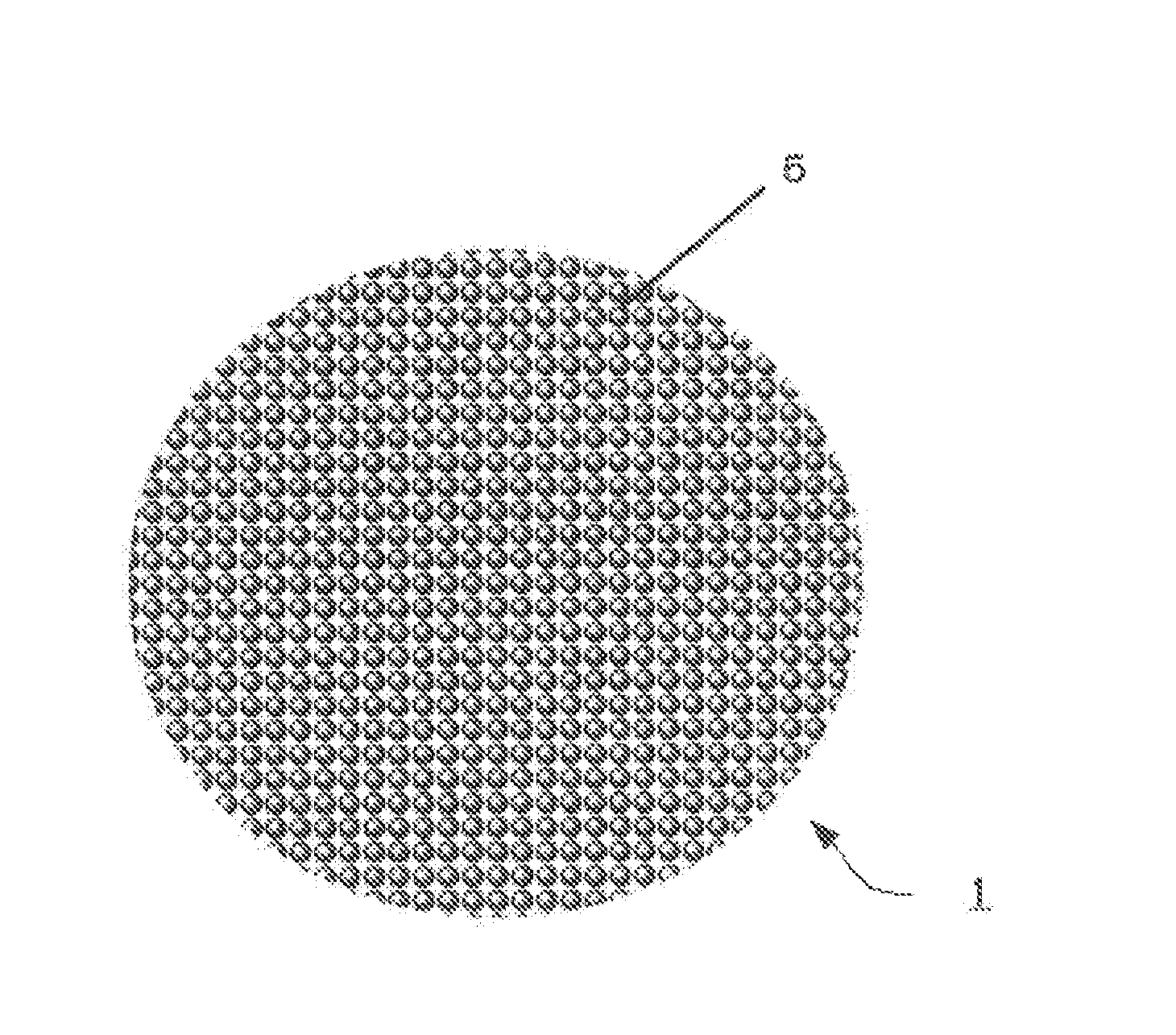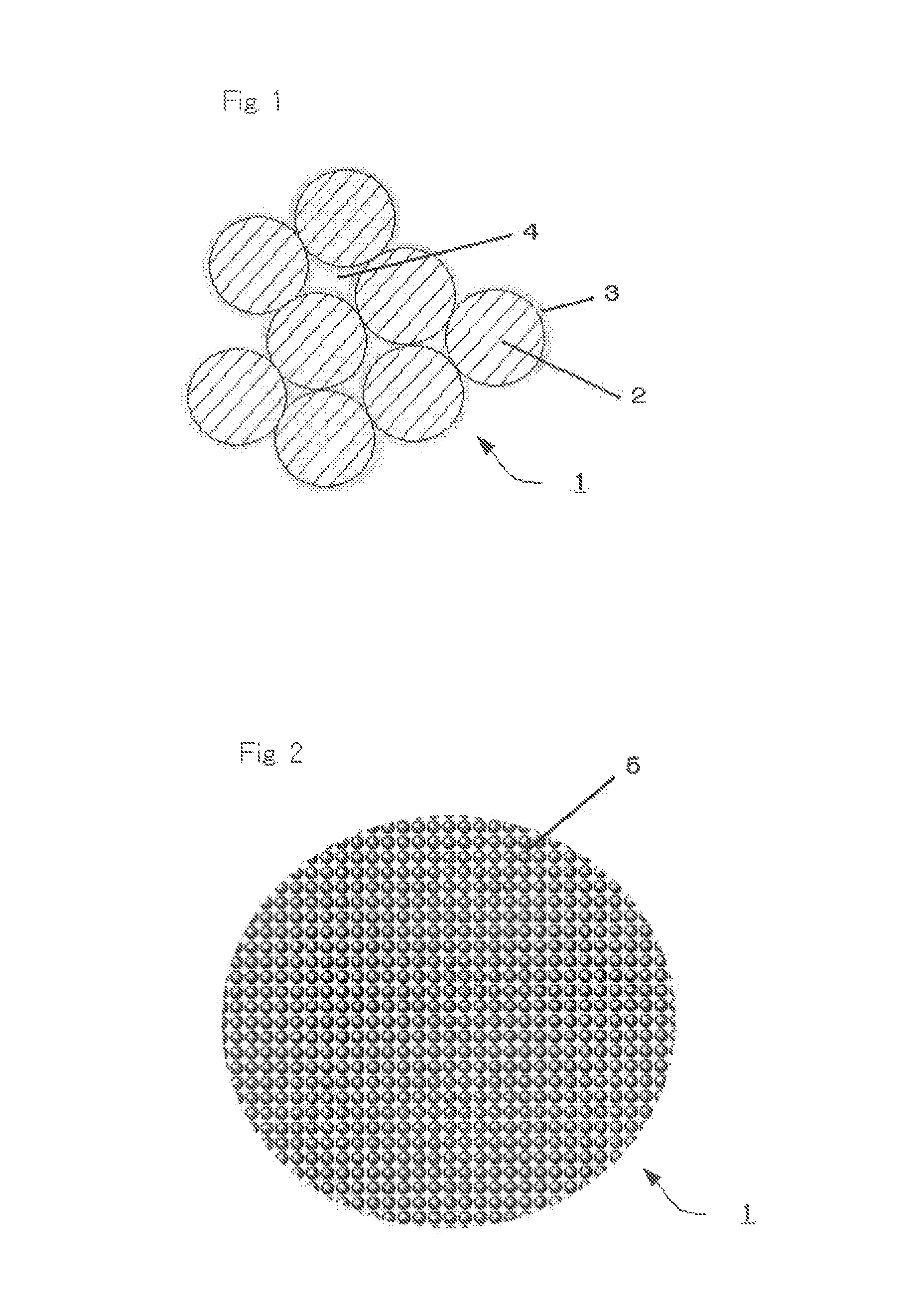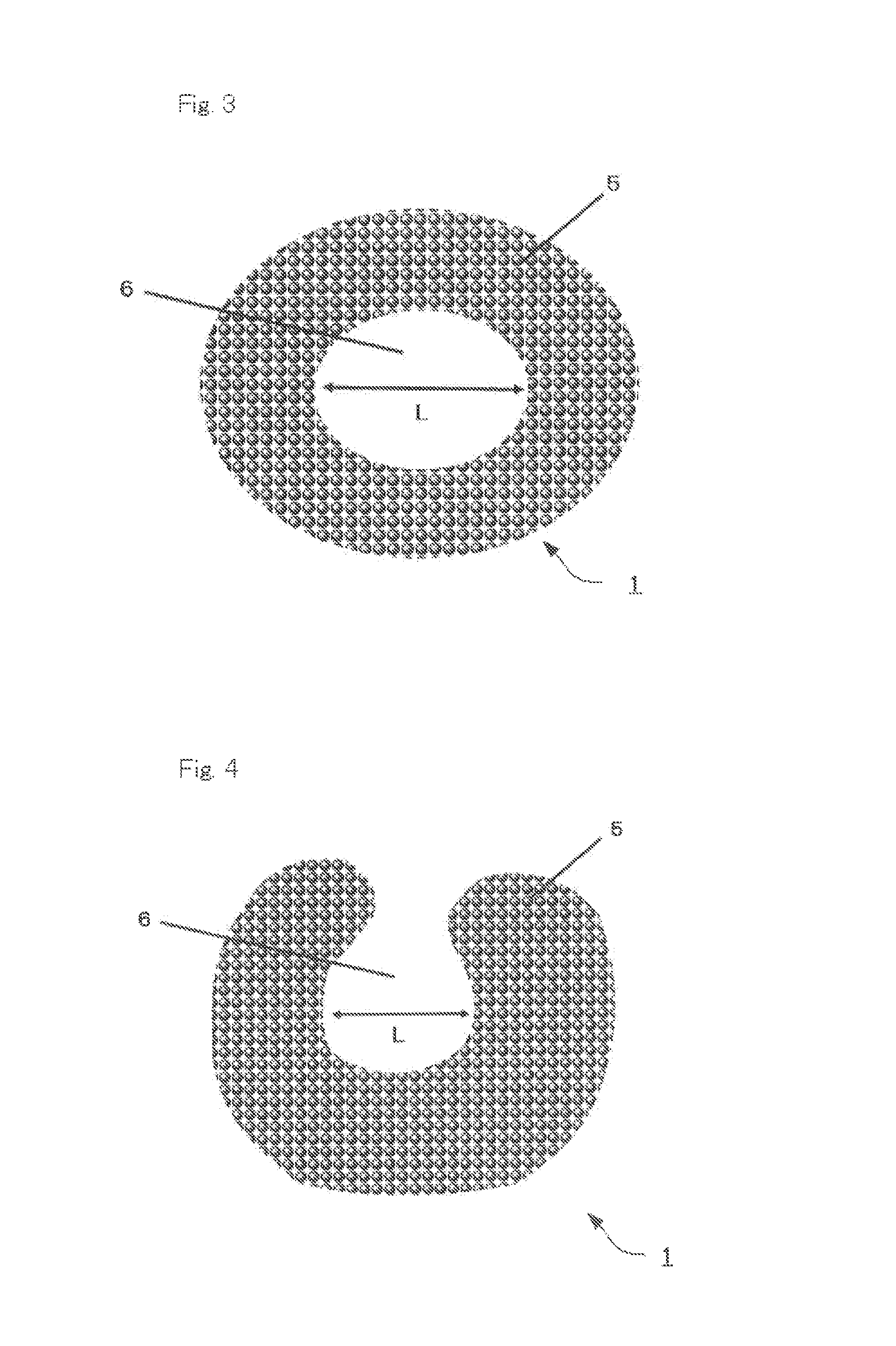Organic-inorganic composite filler, and method for producing the same
- Summary
- Abstract
- Description
- Claims
- Application Information
AI Technical Summary
Benefits of technology
Problems solved by technology
Method used
Image
Examples
example 1
[0241]One hundred g of inorganic particles F-1 and 0.4 g of water absorbing resin SAP1 were added to 200 g of water, and an aqueous dispersion thereof was obtained with the use of a circulating pulverizer “SC Mill” (a trade name; manufactured by Mitsui Mining Company, Ltd.).
[0242]On the other hand, 4 g (0.016 mol) of γ-methacryloyloxypropyltrimethoxysilane and 0.003 g or acetic acid were added to 80 g of water, and the mixture was stirred for 1 hour and 30 minutes, so that a uniform solution with a pH of 4 was obtained. The solution was added to the above mentioned inorganic particle dispersion and mixed uniformly. Thereafter, the dispersion was granulated by a spray drying method, including supplying while lightly stirring the dispersion onto a disk rotating at high speed.
[0243]A spray drier having a rotary disk for atomization by centrifugal force (Spray Drier “TSR-2W”, a trade name; manufactured by Sakamoto Giken K.K.) was used to perform the spray drying. The rotational speed of...
example 2
[0249]Using the same process as in Example 1, except that 0.4 g of SAP2 was used as the water absorbing resin, 66 g of inorganic aggregate particles were obtained. The aggregation gaps in the inorganic aggregate particles had a micropore volume of 0.24 cm3 / g, and an average pore diameter of 48 nm. In addition, the inorganic aggregate particles had an average particle diameter of 35.6 μm.
[0250]Subsequently, 8.1 g of an organic-inorganic composite filler was obtained using the inorganic aggregate particles by the same process as in Example 1. The aggregation gaps in the organic-inorganic composite filler had a micropore volume of 0.08 cm3 / g, and an average pore diameter of 28 nm. The inorganic aggregate particles had an average particle diameter of 36.5 μm, and an average degree of symmetry of 0.85. It was also confirmed that the inorganic primary particles of the inorganic aggregate particles had an average particle diameter of 200 nm.
[0251]The measured organic resin content in the o...
examples 3 to 13
[0252]The same process as in Example 1 was used, except that the type of the inorganic particles, and the amount of the water absorbing resin used in the production of the inorganic aggregate particles, as well as the type and amount of the polymerizable monomer and the polymerization initiator contained in the polymerizable monomer solution were each changed as shown in Table 1. As a result, spherical organic-inorganic composite fillers were obtained in either process. The physical properties of each resulting organic-inorganic composite filter were measured as in Example 1. The results are shown in Table 2,
PUM
| Property | Measurement | Unit |
|---|---|---|
| Length | aaaaa | aaaaa |
| Pore size | aaaaa | aaaaa |
| Percent by mass | aaaaa | aaaaa |
Abstract
Description
Claims
Application Information
 Login to View More
Login to View More - R&D
- Intellectual Property
- Life Sciences
- Materials
- Tech Scout
- Unparalleled Data Quality
- Higher Quality Content
- 60% Fewer Hallucinations
Browse by: Latest US Patents, China's latest patents, Technical Efficacy Thesaurus, Application Domain, Technology Topic, Popular Technical Reports.
© 2025 PatSnap. All rights reserved.Legal|Privacy policy|Modern Slavery Act Transparency Statement|Sitemap|About US| Contact US: help@patsnap.com



